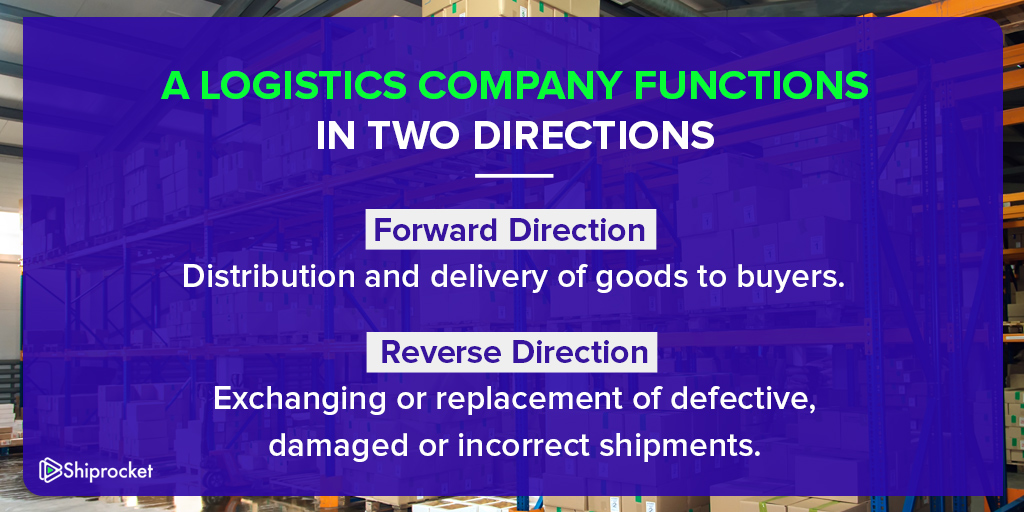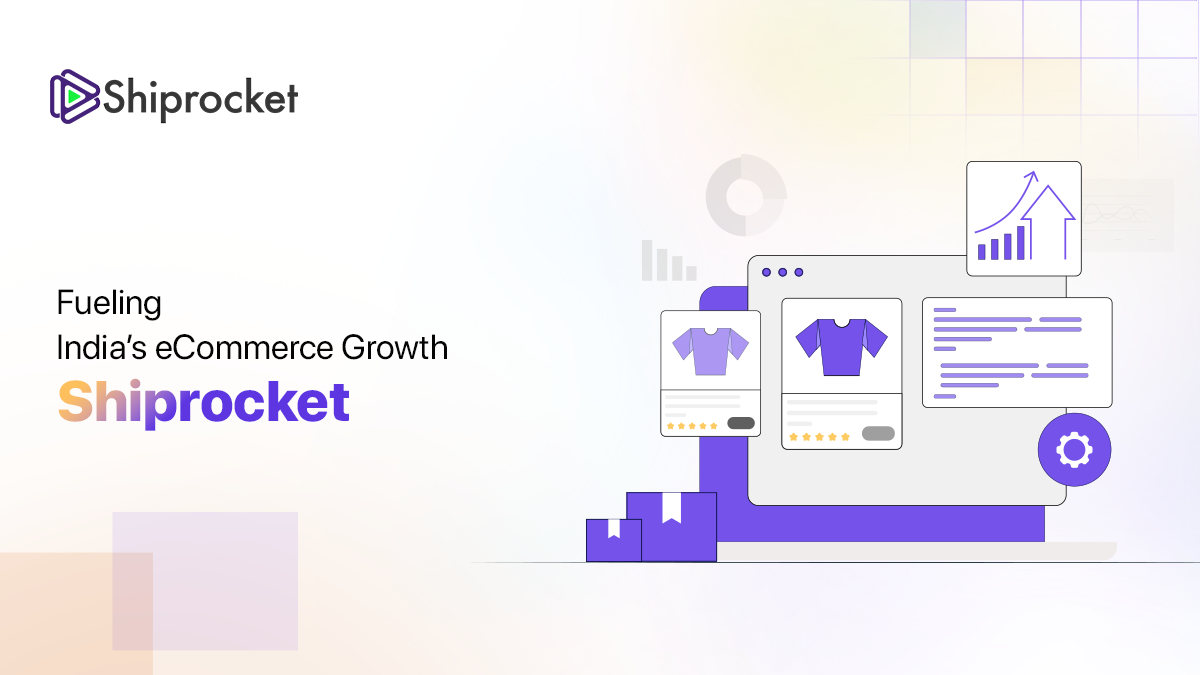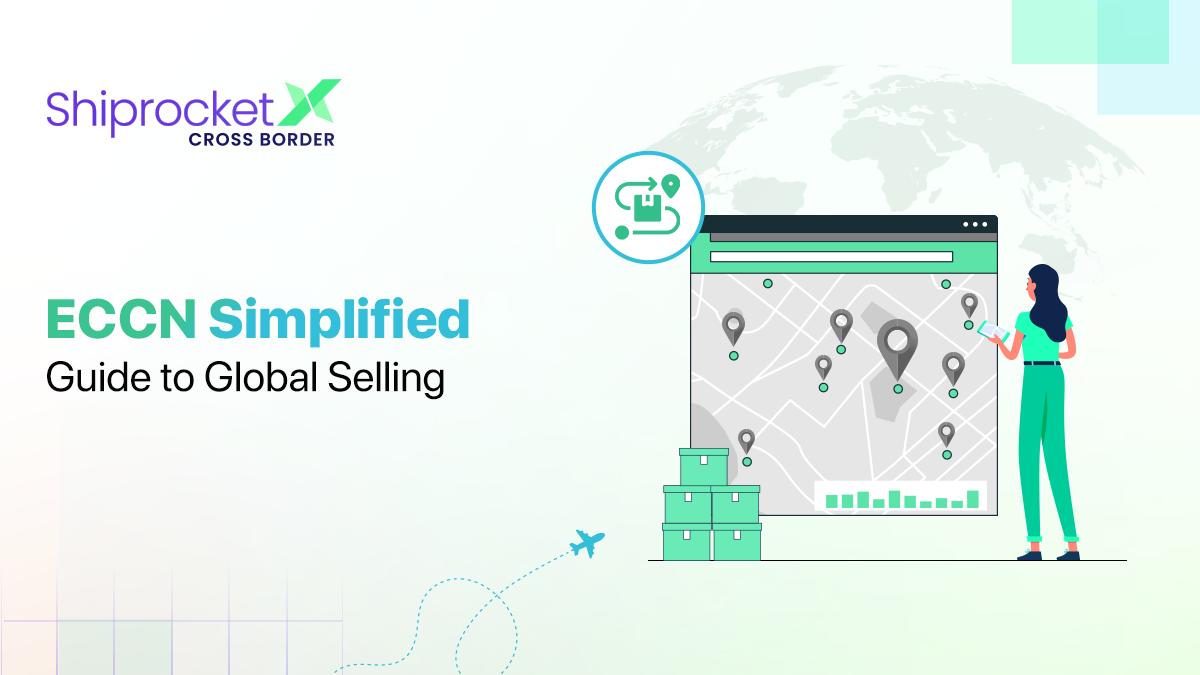How Does eCommerce Logistics Work?
- What is eCommerce Logistics?
- Why is Logistics So Crucial in eCommerce?
- 3 Parts of eCommerce Logistics
- Understanding the Five Key Components of eCommerce Logistics
- How Does eCommerce Logistics Work?
- Ways to Manage Your eCommerce Logistics.
- Streamline Your eCommerce Shipping with Shiprocket: A Hassle-Free Solution for Sellers
- Conclusion
Managing Logistics is the greatest challenge for any eCommerce company especially in a country like India with a vast territory. With the advancements in eCommerce, even the logistics industry is witnessing innovation and implementing technological support to cater to such high demands.
In today’s era of online shopping, customers can track their orders from the moment they leave the factory or warehouse until they reach their destination. This tracking feature proves particularly valuable during challenging weather conditions such as heavy rain or flooding, which can disrupt transportation networks and cause damage to infrastructure like bridges.
Before the rise of eCommerce, retailers typically obtained their goods from manufacturers or distributors. However, with the proliferation of online shopping platforms, intermediaries such as clearing and forwarding agents, distributors, dealers, and retailers have been bypassed. Instead, suppliers now engage directly with end-users, streamlining the selling process.
With these intermediaries removed, eCommerce logistics has become an essential part of supply chain management and emerged as a highly specialized service, most of which are managed by eCommerce companies. Here, we will discuss how eCommerce logistics works.

What is eCommerce Logistics?
eCommerce logistics is getting products to online shoppers quickly and smoothly. It involves planning, managing, and overseeing how goods are obtained, stored, and delivered to customers’ homes or workplaces.
The market for eCommerce logistics was estimated to be worth USD 315.82 billion in 2022. Between 2023 and 2030, it is projected to expand at a compound annual growth rate (CAGR) of 22.3%.
As businesses plan for the future, many choose eCommerce as their primary way to reach customers.
Why is Logistics So Crucial in eCommerce?
As the number of people using the internet increases, eCommerce also grows. Brands typically engage with customers online first, thereby, focusing on SEO and social media strategies rather than physical stores has become important.
eCommerce relies heavily on logistics, which refers to managing goods and services from the point of origin to the point of consumption. eCommerce orders often involve small packages and are placed by various customers, many of whom may not be loyal to a particular brand. Additionally, product demand can fluctuate unpredictably, making it challenging to anticipate shipping needs.
To address these challenges, eCommerce businesses need to streamline their logistics operations. This may involve automating processes within logistics centers to handle a sudden increase in demand, ensuring efficient handling of orders during peak times, and maximising sales opportunities. eCommerce businesses can enhance customer satisfaction, reduce shipping costs, and improve overall operational effectiveness by investing in efficient logistics management.
3 Parts of eCommerce Logistics
ECommerce logistics comprises three main parts:
- Storage: This means getting, checking, and moving goods in a warehouse before sending them out.
- Information systems: Handling lots of online orders needs good technology. Using a warehouse management system (WMS) helps control everything in a warehouse.
- Last-mile delivery: This is the final step, sending out orders. Planning things like packing, labelling, and delivery routes is important.
Understanding the Five Key Components of eCommerce Logistics
- Suppliers: These companies make the products and send them to warehouses. If a brand does dropshipping, the supplier ships directly to the customer. Otherwise, the brand orders in bulk and stores the products in a warehouse, shipping them out when orders are placed.
- Fulfillment Centers: These big warehouses store inventory close to where customers are. They pack and ship products as soon as someone buys them. The eCommerce business might own or rent these warehouses, or they might be run by a third-party logistics provider.
- Distribution Centers: Sometimes, big eCommerce companies use these hubs to send inventory to different warehouses or transport methods. They might have separate warehouses for business-to-business and direct-to-consumer orders.
- Sorting Facilities: These places organise products for large eCommerce operations that deal with many items.
- Carriers: These are the companies that deliver products to customers’ doors. These include USPS, UPS, FedEx, and DHL in the US. They pick up packages from warehouses or fulfillment centers and deliver them to the customers, usually by truck or plane. Sometimes, a brand might offer its delivery services.
How Does eCommerce Logistics Work?
eCommerce logistics handles all the steps of getting products from sellers to buyers when shopping online. This includes tasks like keeping track of inventory, storing products, packing them for shipment, putting on labels, generating bills, arranging delivery, collecting payments, and managing returns if necessary.
To ensure everything runs smoothly, it’s important to understand the areas where products need to be delivered, the roads and conditions for transportation, and the rules and laws for moving goods. The main aim of eCommerce logistics is to ensure that packages are delivered quickly, safely, and accurately to customers.
The Logistics Company Functions in Two Directions:

Forward Direction
This involves getting products to buyers and dealing with returns. In the forward direction, eCommerce companies follow these steps:
- Receiving the order on an eCommerce store
- Providing a payment option
- Preparing inventory
- Packaging the item
- Preparing its invoice
- Dispatching the order
For eCommerce companies, forward logistics includes receiving orders, preparing inventory, packing, generating invoices, receiving payments, dispatching orders, and delivering parcels to customers. Delivery times vary based on product availability and customer location, with different delivery charges for specific areas. During shipping, sellers must keep customers informed of their parcel’s location through tracking methods like SMS or email notifications.
Payment collection is crucial for eCommerce businesses and logistics companies. Multiple payment options such as credit/debit cards, bank transfers, UPI, and cash on delivery (COD) enhance customer satisfaction. Despite digitalisation efforts, COD remains important, especially in countries like India, where many customers prefer cash transactions.
Reverse Direction
This deals with returns, replacements, or defective or wrong shipment exchanges. eCommerce logistics also involves working in reverse. Sometimes, products are incorrect or damaged despite efforts to provide quality. In such cases, efficient reverse logistics are crucial. Logistics companies are responsible for promptly collecting and replacing defective or damaged products to satisfy the customer. The focus should be on delivering a good consumer experience to prevent further complaints.
A smooth exchange, replacement, or return process builds trust between the customer and the eCommerce company. They ensure that reverse logistics operate smoothly. Regardless of how efficient an eCommerce business is in delivering its products, having a systematic and well-planned reverse logistics system is essential. This ensures that defective or damaged goods are managed properly and replaced promptly, satisfying the consumer. A smooth and organised return process is crucial in building customer relationships.
Both these processes become easy if logistics are managed and controlled by an eCommerce company.
Ways to Manage Your eCommerce Logistics.
Here are some simple ways to handle your eCommerce shipping:
- In-house logistics: This means you manage everything yourself, from tracking shipments to calculating shipping costs. It involves a lot of manual work but gives you control over the process.
- Dropshipping: With dropshipping, the supplier sends the product directly to the customer. It’s cheaper because you don’t need to store inventory, but shipping times can be longer, especially for international orders.
- 3PLs (Third-party logistics providers): These companies handle all aspects of shipping for you, including inventory management, warehousing, and packaging. Some even offer fast shipping through nationwide warehouse networks.
Streamline Your eCommerce Shipping with Shiprocket: A Hassle-Free Solution for Sellers
Shiprocket makes shipping easy and improves how customers experience buying things online. Shiprocket ensures everything runs well and offers fast delivery options like next-day or 1-2-day shipping. Many eCommerce businesses trust Shiprocket because it helps them with shipping, returns, and more. If you want to sell your products globally, Shiprocket can make it easy to send things abroad. It also helps manage different orders, like regular or B2B orders. Shiprocket even helps increase the number of people who buy your products and keep them returning for more. The platform is easy to use, letting you manage all your sales channels in one place and helping your online business grow successfully.
Conclusion
Understanding how eCommerce logistics function is vital for businesses operating in the online marketplace. It involves effectively managing the flow of goods from storage to delivery to the customer’s doorstep. Leveraging technology such as inventory management systems and analytics tools can help businesses optimise their logistics operations. These tools enable companies to track stock levels in real-time, analyse customer buying patterns, and identify areas for improvement in the logistics process. A well-executed eCommerce logistics strategy ensures smooth operations and enhances customer experience. Businesses can foster customer satisfaction and loyalty by ensuring that products are readily available, orders are processed efficiently, and deliveries are made on time. A seamless logistics process can ultimately lead to increased sales and sustained growth in the competitive online marketplace.







Direct Bazaar international ltd
Want to corporate tie up call me
Informative article.